Water attractions for logs: how trees were floated to sawmills in the USA (8 photos)
The logs were lowered down many kilometers of canals that resembled water slides. 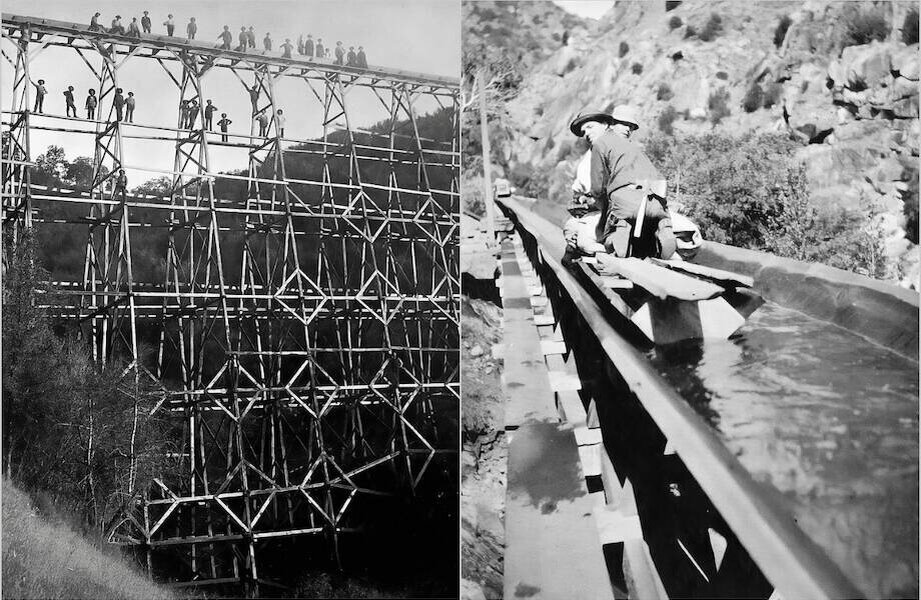
Before timber trucks came along, logs were often floated down rivers. They developed their own system: giant boats were built from wood, which set off along the river on their only voyage. They were affectionately called “whites”. In North America, the first settlers began to float logs along rivers at the beginning of the 17th century, and later they came up with... water slides for wood! 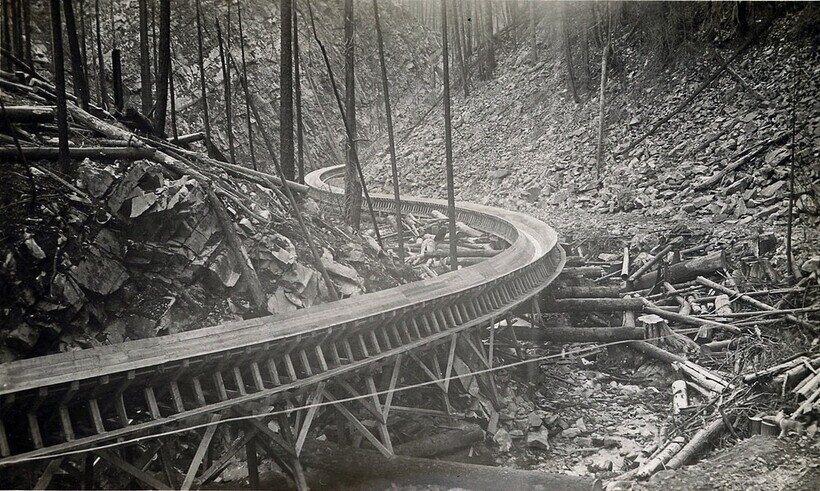
Typically, lumberjacks worked in the following way: they cut down part of the forest, and when the trees ran out, they moved to another point. And then everything went in a circle: trees were felled again and lowered down the river, and as soon as the area was devastated, people moved to new territories. Over time, loggers began to move inland, further from the rivers, so they had to look for new ways to deliver wood. This is how channels for fusing logs appeared. The last of them functioned forty years ago. 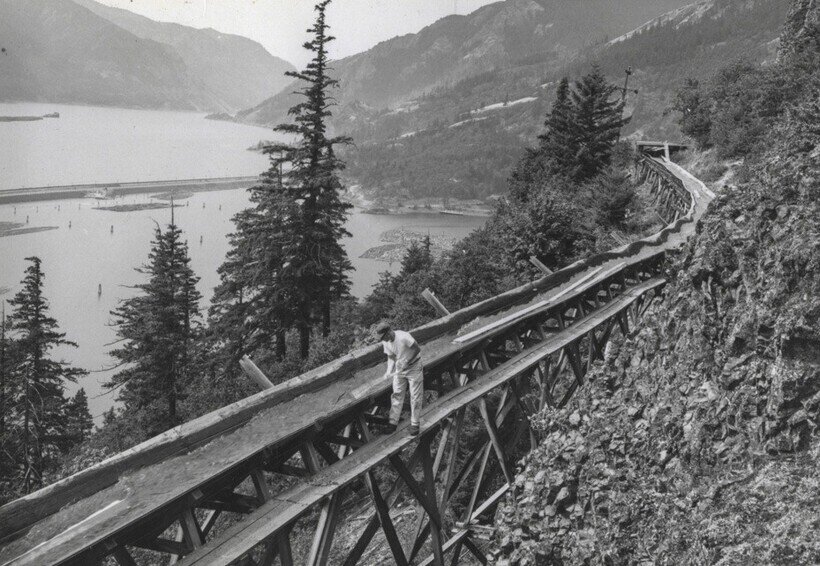
These channels were a shallow trench through which lumber was carried down to the mills with the help of water. Some of these structures looked amazing: they stretched for many kilometers over precipices and slopes, and sometimes reached several meters in height. Canals were laid in areas where it would be too difficult to reach on horseback. Thus, the chute became a cheap alternative for transporting wood. 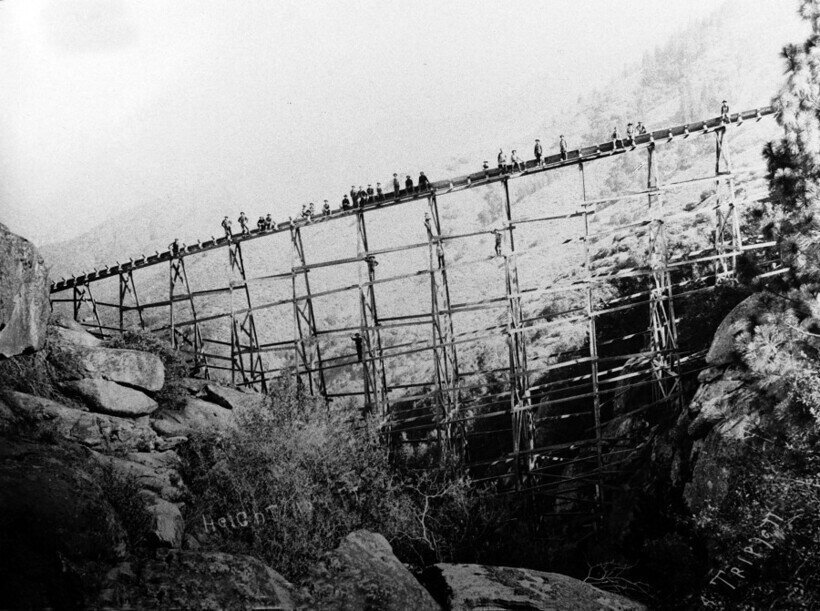
The first canals were built square, but they turned out to be inconvenient: due to congestion, they had to be constantly maintained. The first V-shaped canals appeared in the 1860s, and they were a real breakthrough. Now, even if a log got stuck, the water, filling the canal, pushed it, and the log still made it to the sawmill. 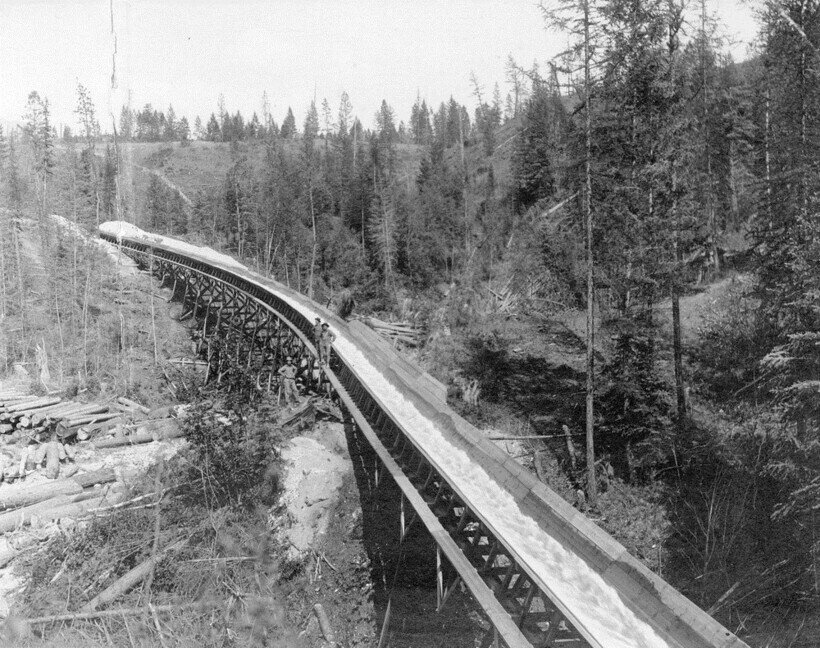
This turned out to be so convenient that by the end of the 19th century, almost every logging company had its own chute for transporting logs to the factory. Sometimes the canals were used by the lumberjacks themselves, sometimes even as an attraction. To do this, small boats were built to go down the canal to the sawmill. 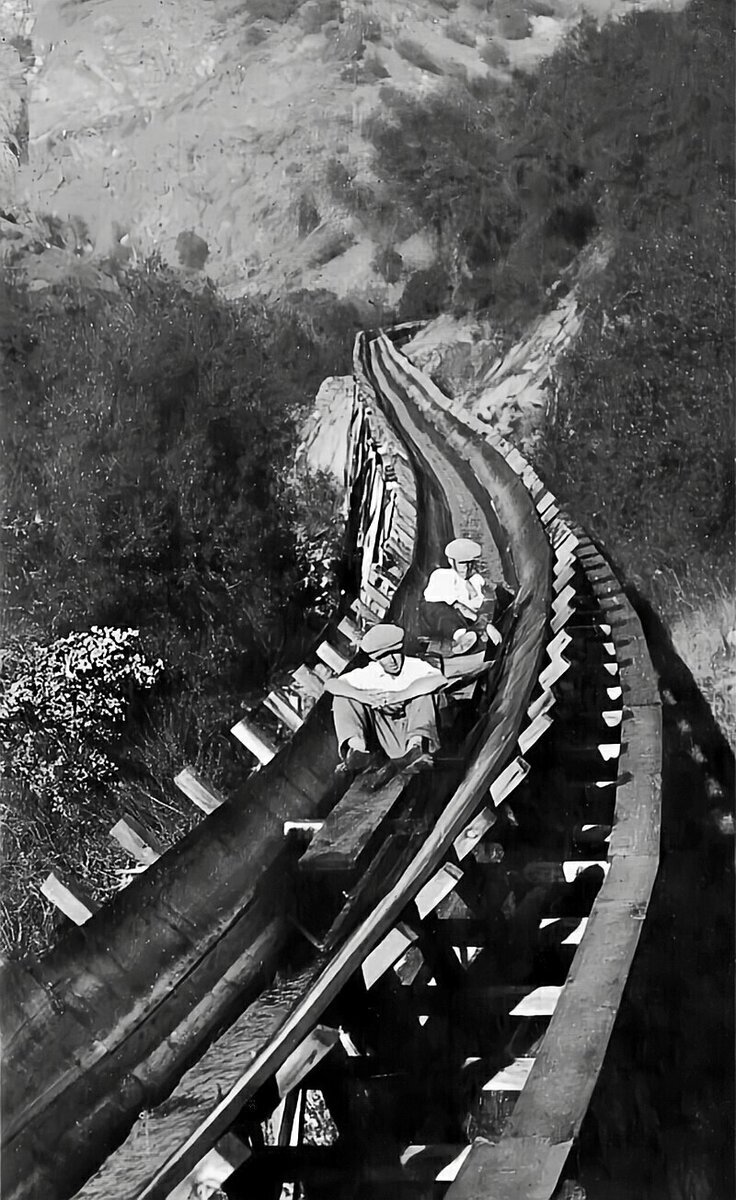
Unfortunately, these structures caused irreparable damage to local forests. Thus, the largest canal, the Kings River, stretches for 100 kilometers. It was built in California, in a place that today the world knows as Sequoia National Park. Initially, the owners of Kings River planned to build a railway, but construction turned out to be too difficult and expensive, so they chose a more cost-effective method - a wooden canal. 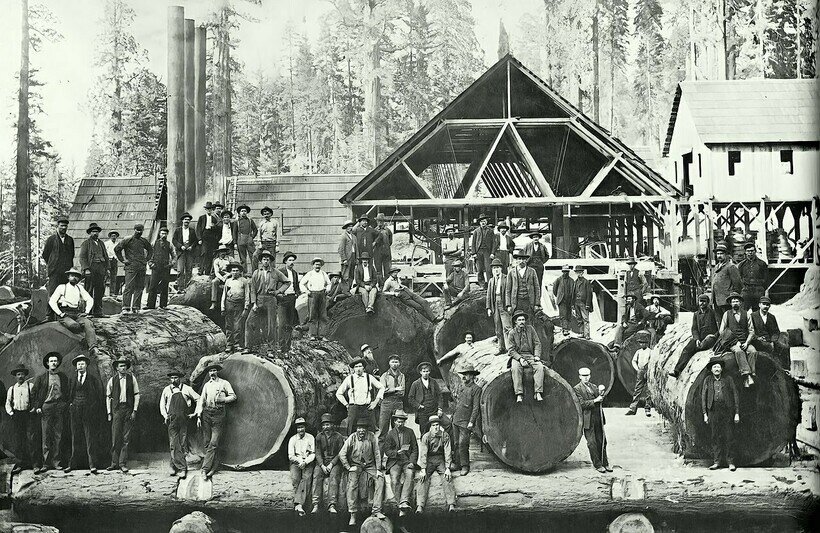
It was then that the catastrophic cutting down of centuries-old trees began. She was led in a barbaric manner: the sequoias were so large and heavy that when they fell, they often shattered into splinters. In this case, large trunks that remained unharmed during the fall had to be blown up. As a result, about a fifth of the entire felled forest reached the sawmill. 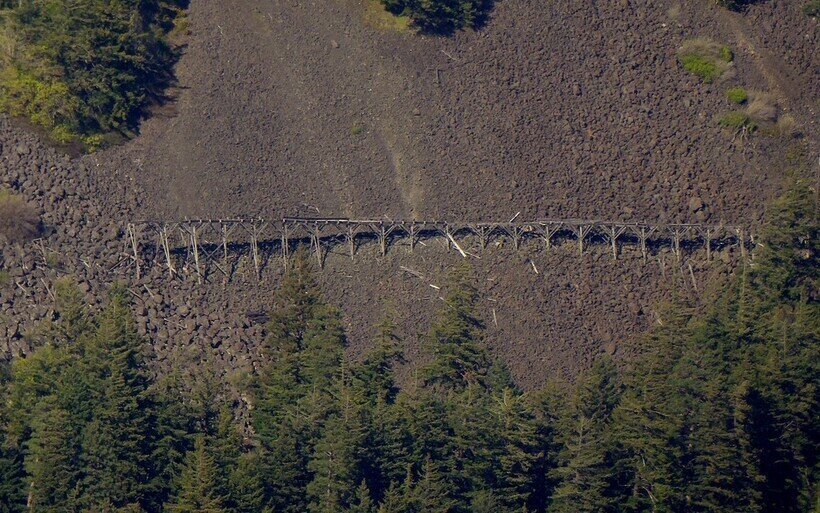
In the 20th century, timber trucks became popular, and many canals were dismantled for firewood because they were no longer needed. The last log channel, the Broughton Flume, closed in 1986 after more than 60 years of operation. Parts of this 30-kilometer structure in Washington state still rise in local forests.

























